We've organized our favorite tree species into
Large Shade Trees,
Medium Shade Trees, and
Small Ornamental Trees. All the listed species are deciduous trees (trees that drop their leaves for the winter); no evergreens are included here. Check back later for a list of our favorite Fruit Trees!
LARGE SHADE TREES
American Sycamore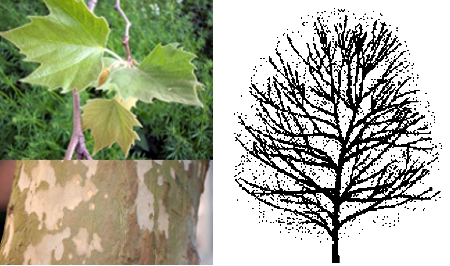
Plantanus occidentalis
Nearly identical to the majestic London Planetree, this impressive and fast-growing tree can reach 70 feet tall, with a round crown spreading 50-60 feet. The adaptable and disease-resistant planetree features large, maple-like leaves and beautiful patchy bark with colors of creamy white to olive green. It sets 1-inch wide, round, fuzzy-looking fruits in the fall.
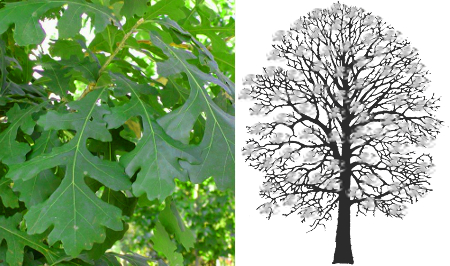 Bur Oak
Bur Oak
Quercus marcocarpa
This long-lived, impressive oak can reach heights of 60-70 feet with a full canopy of equal width. This fine specimen tree has lustrous green leaves, furrowed dark grey bark, and acorns with fringed caps. The Bur Oak grows well in various soil types and tolerates city heat, pollutants, and drought once established. Its moderate growth rate can be increased with more frequent watering.
Catalpa
Catalpa speciosa
This large, whimsical tree has an irregular, rounded crown with spreading branches and huge, heart-shaped leaves. Drought tolerant and a fast grower, the Catalpa reaches heights over 60 feet with a roughly 30-foot spread. In June, clusters of white, orchid-like flowers make a dramatic show, followed by long bean-like seed pods.
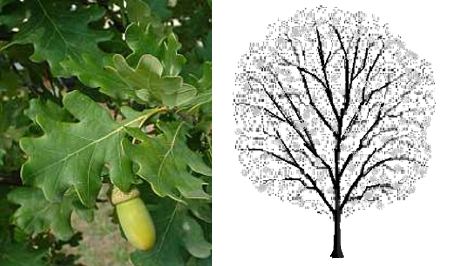 English Oak
English Oak
Quercus robur
The English Oak grows to 50-60 feet in our area and is very long lived, tolerating drought and a wide range of soils. This stately tree provides dense shade and features a broad round top, stout spreading branches, dark green foliage, and small elongated acorns. This is the easiest of the oaks to transplant. It can reach a height of 45’ to 55’ in this area and is extremely long lived. It is a stately broad round-topped tree with stout spreading branches. English Oak will tolerate a wide range of soil pHs, including clay, but prefer well-drained soil and full sun. Denver Water lists English Oak as moderate to low in water demand. The leaves are dark green in the summer, turn brown in the fall, and may hang on into winter. The acorns are quite small. English Oak covered much of England just 500 years ago. They provided the wood of King Arthur’s table (allegedly), of great cathedrals and of three-decker English warships said to require up to 3,500 trees.
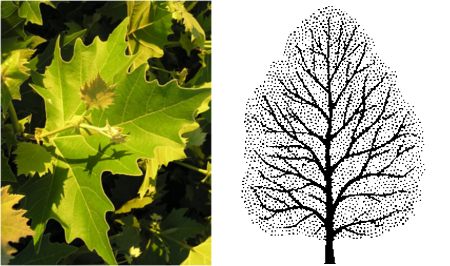 London Planetree
London Planetree
Platanus x acerifolia
Nearly identical to the majestic American Sycamore, this impressive and fast-growing tree can reach 70 feet tall, with a round crown spreading 50-60 feet. The adaptable and disease-resistant planetree features large, maple-like leaves and beautiful patchy bark with colors of creamy white to olive green. It sets 1-inch wide, round, fuzzy-looking fruits in the fall. The Park People often sources 'Bloodgood' and 'Exclamation' varieties for our
Denver Digs Trees program.
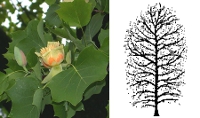 Tulip Tree
Tulip Tree
Liriodendron tulipifera
A stately tree that gets its name from the pale yellow, tulip-shaped flowers that bloom in the spring. This large tree can grow up to 90 feet tall and 45 feet wide. Its large bright green, tulip-shaped leaves turn a golden-yellow or clear-yellow color in autumn. The Tulip Poplar prefers fertile, moist soil and needs plenty of room to develop.
Western Hackberry
Celtis occidentalis
A Colorado native, the drought- and urban-tolerant Common Hackberry is one of our most adaptable and hardy trees. It grows relatively rapidly to a height of 50-70 feet with a variable, often upright oval, shape. In early fall, its small fleshy fruit changes to dark red or black, attracting Cedar Waxwings and other birds throughout winter. Plant this tree to provide urban wildlife with food and shelter!
MEDIUM SHADE TREES
American Hophornbeam
Ostrya virginiana
Known also as Ironwood for its strong, dense wood, the American Hophornbeam grows in a pyramidal form reaching a rounded shape at 30-50 feet tall. A very attractive landscape tree, it develops decorative hop-like fruit clusters of small inflated pods each of which contains a hard nutlet. The Hophornbeam also has ornamentally attractive bark and trunk features inherited from its close relatives in the birch family: its gray-brown bark forms vertical strips that exfoliate at the ends, while the trunk and main branches develop a muscle-like appearance.
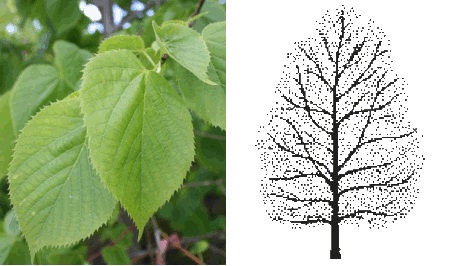 American Sentry Linden*
American Sentry Linden*
Tilia americana 'American Sentry'
Grows 40+ feet with an upright form spreading 20-30 feet. Produces rich white flowers in the summer that emit a pleasant, spicy fragrance. Yellow fall color. Lindens perform best when planted in irrigated blue grass or with organic mulch. Use tree wrap to protect this tree’s thin, young bark from winter sunscald. Moderate growth rate.
*All lindens are susceptible to damage from the Japanese Beetle. We recommend planting it in areas with low cover by lawn grass as this is where the beetles lay their eggs and mature.
American Yellowwood
Cladrastis kentuckea
This hardy tree has a broad rounded crown of delicate branches reaching 25-30' in height in the Denver area. It tolerates high pH as well as acid soils and likes full sun. It’s fragrant pendulous creamy white spring flowers are similar to Wisteria and in full flower appears to be dripping white rain. The flowers are followed with a small papery pod. The leaves open yellowish green, turning bright green in the summer striking a sharp contrast to the darker green of most ashes, maples and oaks. The leaves turn yellow to golden yellow in the fall. It is called yellowwood because the heartwood is yellow. It has a very smooth, thin light grey bark which is subject to winter sunscald and sunburn so it should be planted in the winter shade of other trees or buildings. Prune only in summer.
Caddo Sugar Maple
Acer saccharum 'Caddo'
[Description to come.]
Chinkapin Oak
Quercus muehlenbergi
[Description to come.]
Corinthian Linden
Tilia cordata 'Corzam'
The ‘Corithian’ Linden is an elegant, compact tree that takes on a pyramidical form as it matures. This medium-sized tree can grow 45 feet tall by 15 feet wide. Its branches are uniformly spaced and its heart-shaped leaves are smaller, thicker and more lustrous than the larger-leafed linden species. Fragrant, creamy-white flowers appear in the late spring and the leaves turn a vibrant yellow in the fall. Tolerant of urban pollution and drought.
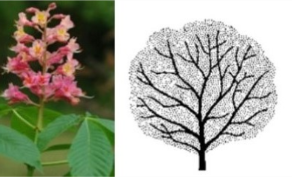 Fort McNair Horsechestnut
Fort McNair Horsechestnut
Aesculus x carnea 'Fort McNair'
This horsechestnut grows 30-40 feet tall with a wide, rounded crown. It features dark green, palmately compound leaves with 5 leaflets each. In late spring, erect 5-8 inch clusters of pink flowers with yellow throats emerge. The 1-1.5 inch long, round fruit has a light brown husk and glossy brown seed. The Fort McNair variety boasts improved resistance to leaf diseases.
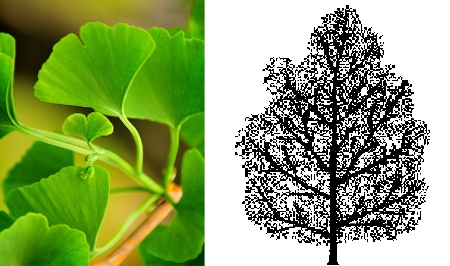 Ginkgo
Ginkgo
Ginkgo biloba
Best known for its unique bright green, fan-shaped leaves, the ginkgo develops from a narrow shape with little branching in youth to a pyramidal, symmetrical broad crown 50 feet tall and 30 feet wide. The Autumn Gold cultivar is seedless and features beautiful deep yellow fall color. Often referred to as a living fossil because of its long history on this planet, the ginkgo is pest-free and heat and pollution tolerant once established.
Glenleven Littleleaf Linden
Tilia cordata 'Glenleven'
Reaching 50 feet tall by 35 feet wide, the elegant Littleleaf Linden features upright, compact branching, fragrant clusters of cream-colored flowers, and heart-shaped leaves. Its formal, pyramidal shape becomes oval to gum-drop shaped as the tree matures.
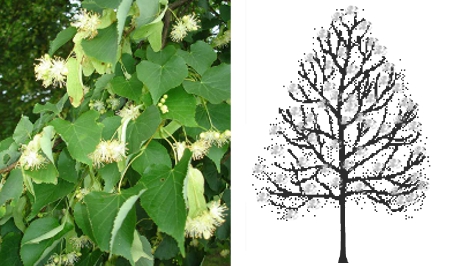 Greenspire Littleleaf Linden
Greenspire Littleleaf Linden
Tilia cordata 'Greenspire'
Neat, trim looking pear shaped tree canopy with heart-shaped glossy leaves. Cinnamon colored bark. Fragrant pale yellow flowers in early summer. Yellow autumn leaves. Reaches a height of 33 to 50 feet, spread of 30 feet. Good accent tree. Maintains a single leader with nice branching habit similar to all littleleaf lindens. Often used as a street tree. The cordata is a native of Europe and the Greenspire is a fairly new variety.
Hardy Rubber Tree
Eucommia ulmoides
A relatively new species for Denver’s urban forest, the Hardy Rubber Tree - widely recognized for its pest-free foliage, drought hardiness, and extreme cold tolerance - is expected to thrive in our climate. It features lustrous dark green leaves that lighten to a paler green before dropping in the fall. Its dense crown is rounded with upward branching and matures to 40-50 feet tall with a similar spread.
Heritage Oak
Quercus x macdanielli
[Description to come.]
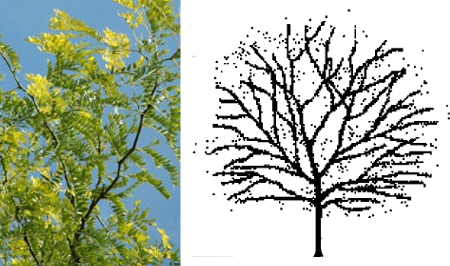 Imperial Honeylocust
Imperial Honeylocust
Gleditsia triancanthos inermis
The drought tolerant and urban hardy Imperial Honeylocust is thornless, and produces few pods. Growing 35 feet tall and wide, this compact, formal honeylocust features a rounded crown and wide branch angles that resist storm damage and create a horizontal spreading branch pattern. Its small green leaflets cast a light shade and turn yellow in autumn.
Japanese Pagodatree
Styphnolobium japonicum
The Japanese Pagodatree reaches 40-50 feet tall with an equal spread and rounded shape. Its small leaflets cast a dappled shade, allowing grass to grow beneath. In August, showy clusters of pale yellow to creamy white pea-like flowers cover its crown. These flowers are followed by decorative drooping seed pods that look like strings of beads. The fast growing pagodatree is known to be tolerant of tough urban conditions, including heat, pollution, and drought.
 Kentucky Coffeetree
Kentucky Coffeetree
Gymnocladus dioicus
While diminutive in its first years, this tree is full of visual interest. The Kentucky Coffee Tree is light, graceful, and airy, transforming into a picturesque craggy tree in winter. Its double compound leaves emerge with a pink to purplish tinge, gradually changing to rich bluish green, and then yellow in fall. This hardy and resilient tree can reach 50 feet tall and 35 feet wide, developing an oval to vase-shaped form.
Mongolian Linden
Tilia mongolica
[Description to come.]
Norwegian Sunset Maple
Acer truncatum x platanoides 'Norwegian Sunset'
This mid-sized maple has an upright oval shape with good branching and a uniform canopy. It reaches 35 feet tall and 25 feet wide, and its glossy dark green leaves turn yellow-orange to red in the autumn.
Ohio Buckeye
Aesculus glabra
The Ohio Buckeye grows to 40 feet tall with a round to oblong crown. Light yellow flowers, in large (4-7 inch) showy, upright clusters appear in April to May. Bark is initially smooth and ashy gray and later darkens to a deeper gray and develops corky, rough patches. Leaves turn a beautiful pumpkin-yellow in autumn.
Patriot Elm
Ulmus wilsoniana ‘Patriot’
A hybrid of the Urban and Prospector Elms, the hardy Patriot Elm is resistant to pests and Dutch elm disease. It features an upsweeping crown that develops into a lovely vase shape, similar to the beloved American Elm. This vigorous grower matures to 50 feet with a 40-foot spread and features dark green leaves that turn yellow in the autumn.
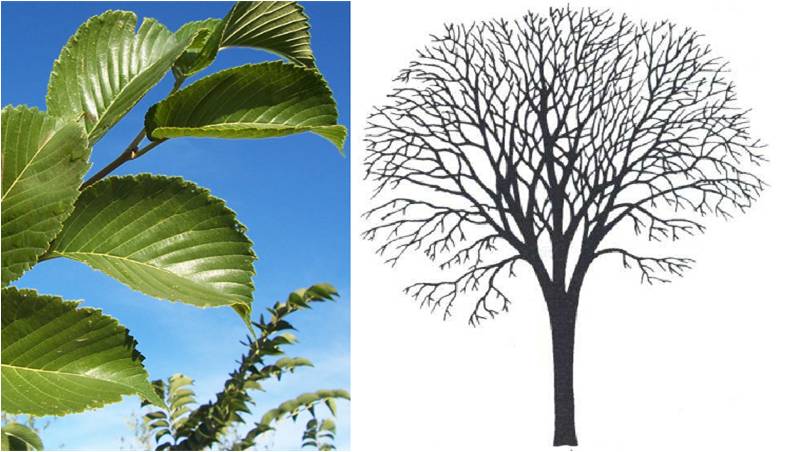 Prospector Elm
Prospector Elm
Ulmus wilsoniana ‘Prospector’
The Prospector Elm offers the American Elm’s lovely vase shape while also offering resistance to pests and Dutch elm disease. This vigorous grower matures to 50 feet with a 25-foot spread and has leaves that emerge orange-red, mature to green, and have yellow fall color. This tree prefers sunny locations and is shade intolerant.
Redmond Linden
Tilia americana 'Redmond'
This linden has a uniform, tightly pyramidal form and reaches roughly 55 feet in height and 25 feet in width at maturity. Its large heart-shaped leaves are glossy green in the summer and turn light yellow or green in the fall. Summertime yields drooping clusters of fragrant, creamy yellow flowers. Lindens perform best when planted in irrigated blue grass or with organic mulch. Use tree wrap to protect this tree’s thin, young bark from winter sunscald.
Ruby Red Horsechestnut
Aesculus x carnea 'Ruby Red'
Medium sized tree grows at a medium rate to 30-35 feet high and almost as wide with an rounded form. Its palmate compound leaves have 7 leaflets that start light green turning dark green in the summer to brown-yellow in the fall. Its large showy rose red flowers are 5-12 inches long appearing in May or June. It will tolerate alkaline soils and prefers full sun or light shade. It prefers moist, well-drained soils and is less drought tolerant than some varieties. The 2-2 ¼ inch nuts mature in September and October and are light brown and spiny with one to three shiny dark brown seeds inside.
Skyline Honeylocust
Gleditsia triancanthos inermis
This popular honeylocust has a strong, straight trunk, upright spreading branches, and is broadly pyramidal. It is thornless and podless and prized for its hardiness in urban settings and drought. Growing 45 feet high and wide, the honeylocust’s small leaflets cast a light shade and turn a golden yellow in autumn.
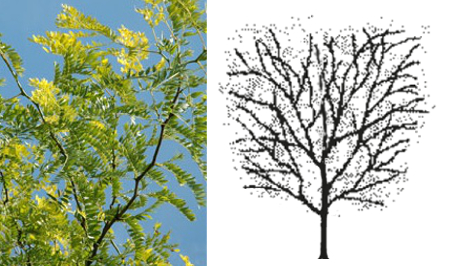 Shademaster Honeylocust
Shademaster Honeylocust
Gleditsia triancanthos inermis
This thornless and podless honeylocust is popular for its strong, straight trunk and airy, upright, symmetrical form. Growing 40-50 feet high and wide, the Shademaster’s deep green, glossy leaflets cast a light, dappled shade and turn a showy clear yellow in autumn.
Shingle Oak
Quercus imbricaria
[Description to come.]
State Street Maple
Acer miyabei 'Morton'
The State Street Maple reaches 50 feet tall and 30 feet wide with an upright oval shape. It features large, glossy dark green leaves, corky bark in youth, and yellow fall color. This maple also has excellent drought and cold tolerance. Relatively shade tolerant.
Sugar Hackberry
Celtis laevigata
[Description to come]
Sycamore Maple
Acer pseudoplatanus
This large deciduous tree is normally seen at 40 to 60 feet in height although it is capable of reaching over 100 feet in height. The spreading branches form an oval or rounded canopy and the dark green, three to seven-inch-diameter, lobed leaves do not ordinarily become showy in the fall, changing only to a muted yellow before dropping, but this will vary. The gray to reddish-brown, scaly bark flakes off in small scales to reveal the showy, orange, inner bark. The green, springtime flowers appear in three to six-inch-long hanging panicles among the leaves in late spring and are followed by one to two-inch-long, winged seeds. Moderate growth rate.
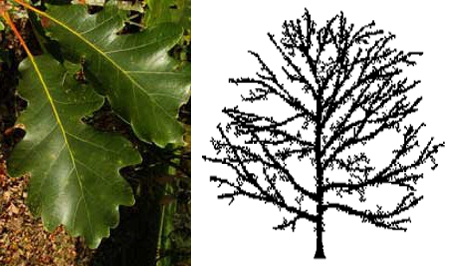 Swamp White Oak
Swamp White Oak
Quercus bicolor
Once established, this rugged, hardy oak has excellent drought tolerance. Its broad, rounded crown reaches heights of 50 feet with a similar spread. The Swamp White Oak’s leaves are a lustrous dark green on top with a velvety silver underside, lending this tree a dramatic visual effect in breezes. In fall, the leaves usually turn yellow, but sometimes reddish bronze, and usually do not hold on into winter.
Texas Red Oak
Quercus buckleyi
[Description to come.]
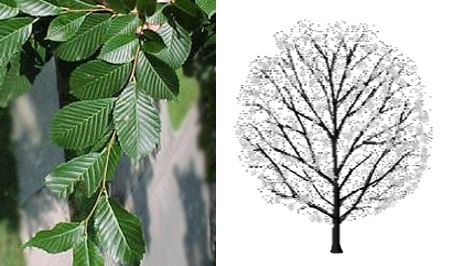 Triumph Elm
Triumph Elm
Ulmus x 'Morton Glossy'
The Triumph Elm offers excellent drought tolerance and pest and disease resistance, making it a great tree for tough, urban sites. Reaching 50-60 feet tall and 40-50 feet wide, this vigorous grower starts with an upright oval form that develops softly arching branches.
Turkish Filbert
Corylus colurna
A popular street tree in Europe, the Turkish Filbert has strong, broad pyramidal form and clean foliage. Once established, this hardy tree is tolerant of heat, cold, drought, and pollution. It grows to 45 feet with a 20-foot spread and has handsome dark green summer leaves, sometimes turning yellow to purple in the fall.
The Autumn Brilliance Serviceberry features a spreading, vase shaped growth habit, maturing at 15-25 feet tall with a similar spread. It has spectacular white flowers, edible fruit that attracts birds, purplish young leaves, and brilliant red fall color. Shade intolerant.
This hardy Rocky Mountain native grows to 20-25 feet tall with a similar spread. Its leaves feature the distinctive maple shape with 3-5 lobes and can turn hues of yellow, orange-red, and red in the fall. Once established, the Bigtooth Maple is drought tolerant and has no pest or disease issues.
The Cole’s Select Serviceberry features a spreading, vase shaped growth habit, maturing at 20 feet tall and 15 feet wide. It has clusters of bright white flowers, thick and glossy green foliage, fruit that attracts birds, and brilliant orange-red fall color.
This pest-resistant, ornamental tree reaches 20-25 feet tall and 15-20 feet wide. It has a rounded habit and features attractive glossy, dark green leaves that occasionally turn purple-red in the fall. In early spring, rounded clusters of small yellow flowers put on a showy display and are followed by edible red, olive-shaped fruits, which are often consumed quickly by birds.
A beautiful and popular accent tree, The Eastern Redbud’s purple-pink flowers appear all over the tree’s branches and trunk in early spring. Surprisingly hardy, the redbud grows to 25 feet with a 20-foot spread, is somewhat shade tolerant, and has a yellow fall color.
Maturing to 30 feet tall and 15 feet wide, this pyramidal pear tree’s compact form fits nicely into narrow spaces. It has profuse white flowers in the spring and glossy green foliage that turns reddish purple in the fall. The Cleveland Select also has good fireblight resistance, is less susceptible to early freezes than other pear varieties, and features fruit only a ½-inch wide.
This species grows to 20 feet tall with a similar width. The ‘Hot Wings’ variety has strong branching structure, improving its endurance in storms. It features scarlet red winged samaras (fruit) and brilliant red-orange fall foliage. This particular tree stands out from all the other Tatarian maples for six weeks every summer with its breath-taking scarlet red samaras (helicopters) contrasting with the rich green foliage giving it an appearance of being in bloom. In the spring, clusters of yellow-white flowers cover the tree after the leaves appear. Fall leaf color transforms from orange-red on the outside of the tree to yellow in the middle.